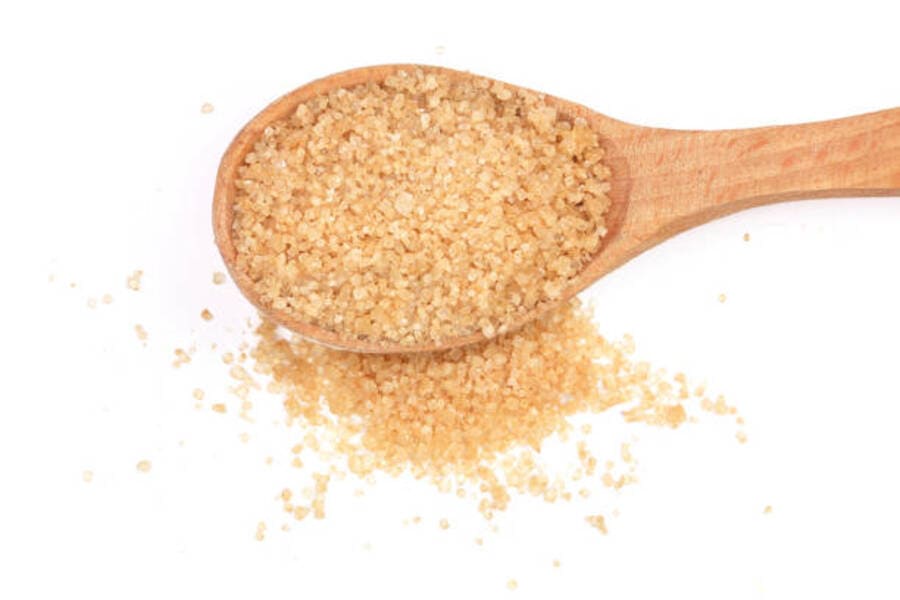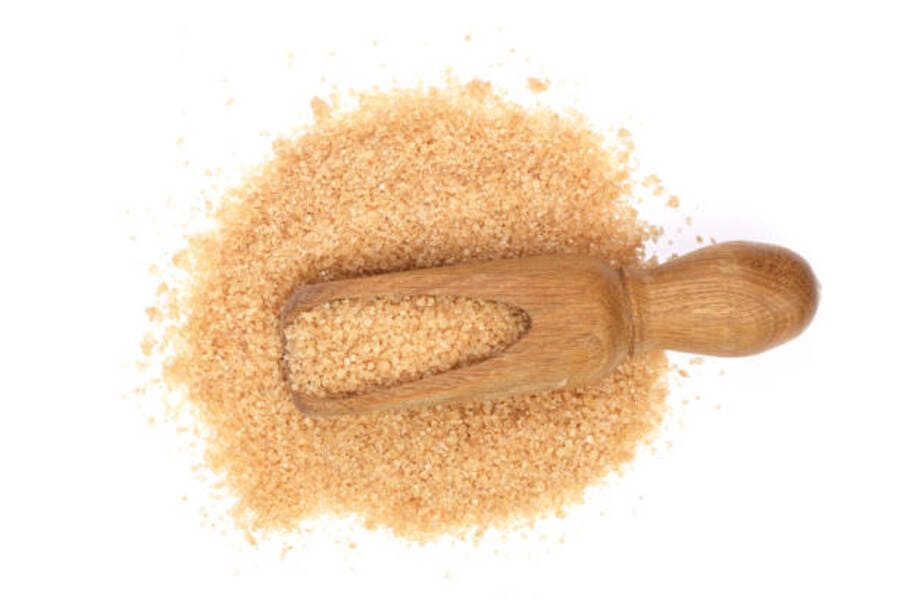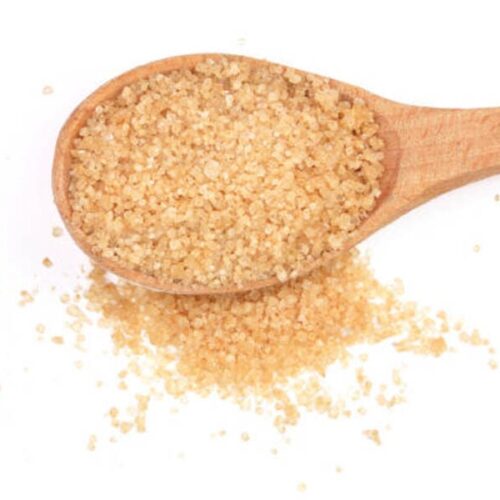Do you have a container of brown sugar in your pantry that’s been sitting there for a while? Maybe you’re not sure if it’s still good to use.
In this blog post, we will answer the question: Can brown sugar go bad? We’ll also discuss how to store brown sugar and how to tell if it has gone bad. So, keep reading.
Before discussing the harmful effects of spoiled brown sugar, let’s take a look at how brown sugar is actually prepared. Brown sugar is made up of two different types of sugar: sucrose and molasses.
Sucrose is the white sugar that we are all familiar with, while molasses is a thick syrup that is made during the refining process of cane sugar.
Because brown sugar contains both types of sugar, it can be affected by both moisture and bacteria. Let’s explore the causes of brown sugar spoilage and how to prevent it from happening.
Can Brown Sugar Go Bad?

Yes, brown sugar can still go bad if it is not stored properly. It is a type of sugar that is produced by refining white sugar.
It gets its color and flavor from molasses, which is a by-product of the refining process. It has a lower moisture content than white sugar, which makes it less prone to clumping.
If brown sugar becomes hard or lumpy, it can be difficult to use in recipes. Additionally, mold can grow on brown sugar if it is stored in an unsealed container or in a humid environment.
To avoid these problems, brown sugar should be stored in an airtight container in a cool, dry place. After reading this, we hope you know the answer to the question, ‘Can brown sugar go bad?’
How to tell if brown sugar is bad?
Brown sugar is a kitchen staple that can be used in a variety of recipes, from cookies to cakes to BBQ sauces. It can easily go bad if not checked. There are a few key indicators to look for.
- First, check the color of the sugar. If it has turned gray or white, it’s time to throw it out. Second, take a sniff.
- Secondly, if the sugar smells sour or musty, it’s no longer good.
- Finally, feel the texture of the sugar. If it’s hard and clumpy, it’s probably time to say goodbye.
Of course, you can always give your brown sugar a taste test to see if it’s still good. But if it doesn’t meet the above criteria, it’s best to toss it out and start fresh.
How long does brown sugar last?
Brown sugar is a type of refined sugar that is often used in baking and cooking to add a caramel-like flavor. It can be stored in a cool, dry place for up to six months. However, it will start to harden and clump after about three months.
Once brown sugar has hardened, it can be re-hydrated by adding a few drops of water and microwaving it for a few seconds. However, it is important to note that brown sugar does not last as long as white sugar.
This is because the molasses content makes it more susceptible to spoilage. As a result, brown sugar should be used within three months of opening the package.
When should you be concerned?
Brown sugar is a delicious ingredient that can add a touch of sweetness to any dish. However, like all food, it can go bad over time.
When brown sugar starts to spoil, it will develop a hard, crusty texture. The sugar may also start to turn white or yellow in color. If you see any of these signs, it’s time to throw out the sugar and get a fresh package.
In addition, you should be on the lookout for mold growth. Mold can cause serious health problems if ingested, so it’s best to err on the side of caution and discard any sugar that shows signs of mold growth.
With these tips in mind, you can enjoy fresh, delicious brown sugar for many years to come.
How to store brown sugar?
Brown sugar is a common ingredient in many recipes, but it can be tricky to keep it fresh. If brown sugar is stored in a humid environment, it will quickly become hard.
- To prevent this, always store brown sugar in an airtight container. For best results, place a piece of parchment paper or a sugar packet in the container before sealing it. This will help to absorb any moisture and keep the sugar soft.
- In addition, brown sugar can be stored in the freezer to help prolong its shelf life. Simply place the sugar in a freezer-safe bag or container and use as needed.
By following these simple tips, you can keep your brown sugar fresh and ready to use for all your baking needs. If you want to know ‘can brown sugar go bad’, check out the headings above.
What to do with leftover sugar?
If you find yourself with leftover brown sugar, there are a few things you can do with it.
- One option is to add it to coffee or tea. The molasses will give the beverage a richer flavor.
- Another option is to use it as a scrub. Brown sugar makes an excellent exfoliant and can help to soften dry skin.
- You can also use it to make simple syrup. Just mix equal parts brown sugar and water and heat until the sugar dissolves. This syrup can be used in cocktails or added to desserts.
With a little creativity, there are many ways to use up leftover brown sugar.
How to restore brown sugar when hardened?
When brown sugar hardens, it can be difficult to use in baking and cooking. However, there are a few simple methods that can help to restore it to its original soft, sandy consistency.
1 – The most common method is to simply place the hardened sugar in an airtight container with a piece of bread. The bread will help to absorb the moisture in the sugar, and after a few days, the sugar should be soft enough to use.
2 – Another option is to place the sugar in a microwave-safe bowl and heat it on high for 30 seconds. This will help to loosen the crystals and make the sugar easier to work with.
For large clumps of hardened sugar, you may need to place it in a food processor and pulse until it reaches the desired consistency. With a little effort, you can restore brown sugar to its original state and enjoy its versatile flavor once again.
Restoring moisture to clumped brown sugar
Brown sugar has a tendency to harden and clump over time. This can make it difficult to measure and use in recipes. Fortunately, there are a few simple tricks for restoring moisture to clumped brown sugar.
1 – One easy method is to place the brown sugar in a bowl with a slice of bread.
2 – Alternatively, you can place the brown sugar in a microwave-safe bowl and microwave it for half a minute.
Finally, you can add a few drops of water to the brown sugar and stir until it has rehydrated. With these simple tips, you can keep your brown sugar fresh and clump-free.
Can You Freeze Brown Sugar?

Yes, you can freeze brown sugar. However, it’s important to note that the freezing process will change the texture of the sugar. Once thawed, brown sugar will be more compact and may not work as well for some recipes.
If you plan to use frozen brown sugar for baking, it’s best to thaw it first and then measure it by packing it into a measuring cup or spoon.
This will help ensure that your baked goods turn out just as delicious as they would if you had used fresh brown sugar.
Interesting Facts About Brown Sugar
Here are three interesting facts about brown sugar:
1. Brown sugar gets its color and flavor from molasses, which is a byproduct of refining sugar cane into white sugar.
2. The darker the brown sugar, the more molasses it contains. Dark brown sugar contains up to 6% molasses, while light brown sugar only contains about 3%.
3. Brown sugar is less processed than white sugar and as a result, it retains some of the nutrients found in cane sugar. These include calcium, potassium, and iron.
With its unique flavor and nutritional benefits, it’s no wonder that this pantry staple is so popular among home cooks.

Can brown sugar go bad?
Instructions
Can brown sugar go bad?
- Yes, brown sugar can still go bad if it is not stored properly. It is a type of sugar that is produced by refining white sugar.It gets its color and flavor from molasses, which is a by-product of the refining process. It has a lower moisture content than white sugar, which makes it less prone to clumping. If brown sugar becomes hard or lumpy, it can be difficult to use in recipes. Additionally, mold can grow on brown sugar if it is stored in an unsealed container or in a humid environment.To avoid these problems, brown sugar should be stored in an airtight container in a cool, dry place. After reading this, we hope you know the answer to the question, ‘Can brown sugar go bad?’
Interesting Facts About Brown Sugar
- 1. Brown sugar gets its color and flavor from molasses, which is a byproduct of refining sugar cane into white sugar.2. The darker the brown sugar, the more molasses it contains. Dark brown sugar contains up to 6% molasses, while light brown sugar only contains about 3%.3. Brown sugar is less processed than white sugar and as a result, it retains some of the nutrients found in cane sugar. These include calcium, potassium, and iron.With its unique flavor and nutritional benefits, it’s no wonder that this pantry staple is so popular among home cooks.
FAQs
Brown sugar is a type of sugar that is made by adding molasses to refined white sugar. It has a characteristic brown color and moist texture.
While it is often used in baking, brown sugar can also be used as a sweetener for coffee or tea. We have explained ‘Can brown sugar go bad’ in detail now, let’s discuss some most frequently asked questions about brown sugar.
How do you know when brown sugar is bad?
You can tell if brown sugar is bad by its appearance. If it’s wet, lumpy, or smells sour, then it’s bad and should be thrown away.
It’s also a good idea to taste a small bit of brown sugar before using it in recipes to make sure it’s not stale or too sweet.
Can bad brown sugar make you sick?
Yes, it’s possible to get sick from bad brown sugar. The sugar may have become contaminated with foodborne pathogens such as bacteria or fungi, which can cause nausea, vomiting, and other gastrointestinal symptoms.
It’s also possible for bad brown sugar to contain harmful chemicals such as arsenic or lead. So if you notice any strange symptoms after eating products containing brown sugar, be sure to see a doctor for diagnosis and treatment.
Does brown sugar grow mold?
It’s not that brown sugar specifically grows mold, but it’s a high-sugar food that is a prime target for mold growth.
Any kind of sugar, whether white or brown, can grow mold if it’s stored in a humid environment. Mold spores are everywhere, and they only need the right conditions to germinate and grow.
So the best way to prevent mold growth on brown sugar is to keep it in an airtight container in a cool, dry place. If you do see any signs of mold on your sugar, discard it immediately. Mold can be dangerous to consume, especially for people with allergies or respiratory problems.
How long does brown sugar last once opened?
Brown sugar can last up to six months if it is stored in an airtight container. If you are wondering, ‘can brown sugar go bad’, then read the first heading of this article.
Final Words
While brown sugar doesn’t technically go bad, it can harden and become difficult to use. If this happens, you can add a piece of bread or an apple to the bag to help soften it up.
You can also put it in the microwave for a few seconds. When brown sugar does eventually start to go bad, it will develop mold like other types of sugar.
This is why it’s important to keep brown sugar in a sealed container at room temperature and out of direct sunlight.
If you have any questions about whether your brown sugar has gone bad, or if you’re still confused and want to know can brown sugar go bad, please leave your questions in the comments below!
Maybe you’d like to read:
- 17 Substitutes For Coconut Sugar
- 8 Demerara Sugar Substitutes
- Does Sauerkraut go bad?
- 5 Jerk Seasoning Substitutes

Welcome to my food site, RecipesAndPanty.com. I am a man who enjoys creating recipes and researching everything about food. This blog is dedicated to my grandmother because she gave me a taste for cooking.